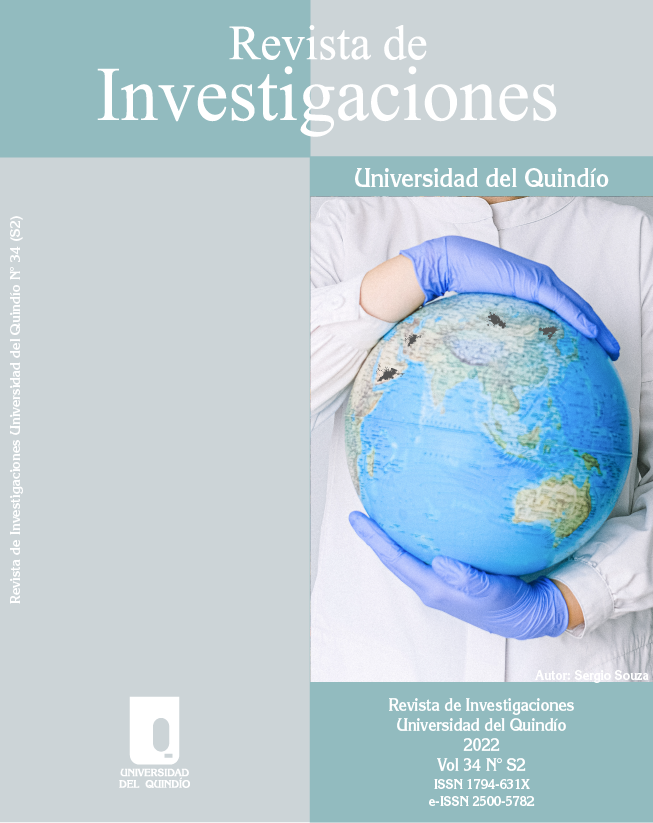Lucha contra el acoso escolar
DOI:
https://doi.org/10.33975/riuq.vol34n2.918Palabras clave:
bullying, humanización, posición optimista, satisfacción, pensamiento positivoResumen
En este estudio se ha realizado un análisis de la problemática del bullying en los centros de secundaria. Para ello se utilizan métodos de comparación, generalización, observación, análisis sistémico, cognición teórica y analogía. Se ha demostrado la necesidad de reaccionar pedagógicamente al problema planteado. Los autores presentan pautas para contrarrestar el problema del bullying. Se enfatiza la importancia de la humanización de las relaciones en la escuela, a partir de los estilos de liderazgo, la formación orientada a objetivos de posiciones optimistas y el pensamiento positivo de escolares y docentes. Se presta especial atención al trabajar con el problema de la intimidación al método de confianza en las fortalezas de un individuo y la formación de sus cualidades de liderazgo. Se han esbozado los principales componentes del conocimiento socialmente significativo: sociopsicológico, sociojurídico y sociointegrador. La formación de este conocimiento permitirá a una persona evitar el acoso o responder a él en el momento adecuado. Se ha acentuado la necesidad de un diagnóstico oportuno del bullying.
Descargas
Citas
Barlit, A. Yu. (2012). Forms and methods of overcoming (minimizing) the socio-pedagogical and psychological problem of bullying in the educational environment. [in Ukrainian].
Ben-Shahar, T. (2012). Be happier. Moscow. [in Russian].
Cornell, D. G., Sheras, P. L., & Cole J. C. Assessment of bullying (2006). In S. Jimerson & M. Furlong (Eds.), Handbook of school violence and school safety: From research to practice. Erlbaum.
Drozdov O. Yu. (2007). The phenomenon of treatment at school: ways to solve the problem. Social Psychology, 6, 124–132. [in Ukrainian].
Ey S., Hadley W., Allen D. N., Palmer S., Klosky J., Deptula D., Cohen R. (2005). A new measure of children's optimism and pessimism: the youth life orientation test. Journal of Child Psychology & Psychiatry, 46(5), 548–558.
Fredrickson, B. L., & Branigan, C. (2004). Positive Emotions broaden the scope of attention and thought-action repertoires: cognition and emotion, 19, 313–332.
Gladden, R. M., Vivolo-Kantor, A. M, & Hamburger, M. E. (2013). Bullying Surveillance Among Youths : Uniform Definitions for Public Health and Recommended Data Elements, Version 1.0. Atlanta, GA; National Center for Injury Prevention and Control, Centers for Disease Control and Prevention and U.S. Department of Education.
Haydamashko, I. A. (2013). Technologies for bulling prevention in the school environment. Khmelnytskui. [in Ukrainian].
Kon, I. S. (2006). What is bullying and how to deal with it? Family and School, 11, 15–18. [in Russian].
Kononets, N., Nestulya, S., Soloshych, I., Zhamardiy, V., & Odokienko, V. (2021). Investigating the Didactic System of Research Competence Formation for Prospective PE Instructors. Journal of Research in Medical and Dental Science. Vol. 9. Issue 7. P. 414–418.
Kononets, N., Polyakova-Lahoda, M., Ilchenko, O., Nikolashyna, T., Petrenko, L., Tsina, V., Nestulya, S., Nestulya, O., Zhamardiy V., & Borodai, E. (2021). Examining the Fundamental Elements of Physical and Health-Enhancing Educational Activity of Student in Distance Learning. Journal of Research in Medical and Dental Science. 9, 419-424.
Kononets, N., Ilchenko, O., Zhamardiy, V., Shkola, O., Broslavska, H., Kolhan, O., Padalka, R., & Kolgan T. (2021). Software tools for creating electronic educational resources in the resource-based learning process. Journal for Educators, Teachers and Trainers. 12(3), 165–175.
Korol, A. (2009). Causes and consequences of bullying. Restorative justice in Ukraine, 1-2, 13, 84–93. [in Ukrainian].
Lane, D. A. (2001). School bullying. http://www.zipsites.ru/psy/psyib/ info.php. [in Russian].
Law of Ukraine: About modification of some legislative acts of Ukraine concerning counteraction to bullying (2019). https://zakon.rada.gov.ua/laws/show/2657-viii. [in Ukrainian].
Law of Ukraine on Education (2019). Verkhovna Rada of Ukraine. https://www.pedrada.com.ua/files/articles/1484/Zakon_Pro_osvitu_2019_Pedrada.pdf. [in Ukrainian].
Lushpay, L. (2014). The experience of the United Kingdom in overcoming bullying in high school. Ternopil. [in Ukrainian].
Masten, A. S. (2003). A resilience framework for research, policy, and practice. New York.
Meneghetti, A. (2004). Psychology of a leader. Moscow. [in Russian].
Otravenko, O., Shkola, O., Shynkarova, O., Zhamardiy, V., Lyvatskyi, O., & Pelypas, D. (2021). Leisure and recreational activities of student youth in the contextof health-preservation. Journal for Educators, Teachers and Trainers. 12(3), 146–154.
Olweus, D. (1993). Bullying at school: What we know and what we can do. Oxford: Blackwell Publishing.
Vasyanovich, G. P. (2011). Pedagogical. Kyiv: Akademvydav. [in Ukrainian].
Pavlovsky, A. P. (2015). Social work with teenagers based on strengths. Kyiv. [in Ukrainian].
Robinson, S. K., & Aronika, L. (2015). The school of future. How to raise a talented child. Moscow.
Rose, C. A., & Espelage, D. L. (2012) Risk and protective factors associated with the bullying involvement of students with emotional and behavioral disorders. Behavioral Disorders, 37 (3), 133–148.
Saiko, N., Yalanska, S., Atamanchuk, N., Zhamardiy, V., & Hordiienko, O. (2021). Therapeutic physical culture as a method of rehabilitation of preschool children with intellectual disabilities. Journal of Research in Medical and Dental Science. 9(8), 30–35.
Savelyev, Yu. B. (2009). Exclusion and violence: is there bullying in Ukrainian schools? Pedagogical, psychological sciences and social work, 97, 71–79. [in Ukrainian].
Seligman, M. (2013). How to learn optimism: change your view of the world and your life. Moscow. [in Russian].
Tarasenko, N., Rasskazova, O., Hryhorenko, V., Shkola, O., Zhamardiy, V., Davydchenko, I., & Shevchenko, N. (2021). Innovative methods and information and communication technologies for the training of future teachers, educators and social workers as the leading subjects of health preservation of the young generation in the context of the COVID-19 . Journal for Educators, Teachers and Trainers. 12(3), 21–29.
Shcherbatykh, Yu. V. (2003). Psychology of fear: a popular encyclopedia. Moscow: Eksmo. [in Russian].
Stelmakh, S. (2011). Bullying at school and its consequences. Slovyansk. [in Ukrainian].
Women's Consortium of Ukraine (WCU), (2018). Most students learn under stress. https://day.kyiv.ua/uk/article/den-ukrayiny/bilshist-shkolyariv-vchatsya-u-stresi. [in Ukrainian].
Zhamardiy, V., Shkola, O., Kolhan, O., Padalka, R., & Kolgan, T. (2021). Investigating the Pedagogical and Psychological Features of the PE Teachers Activities During Mastering Fitness Technologies. Journal of Research in Medical and Dental Science. 9, 182-189.
Descargas
Publicado
Cómo citar
Número
Sección
Licencia
Derechos de autor 2022 Revista de Investigaciones Universidad del Quindío

Esta obra está bajo una licencia internacional Creative Commons Atribución-NoComercial-SinDerivadas 4.0.


